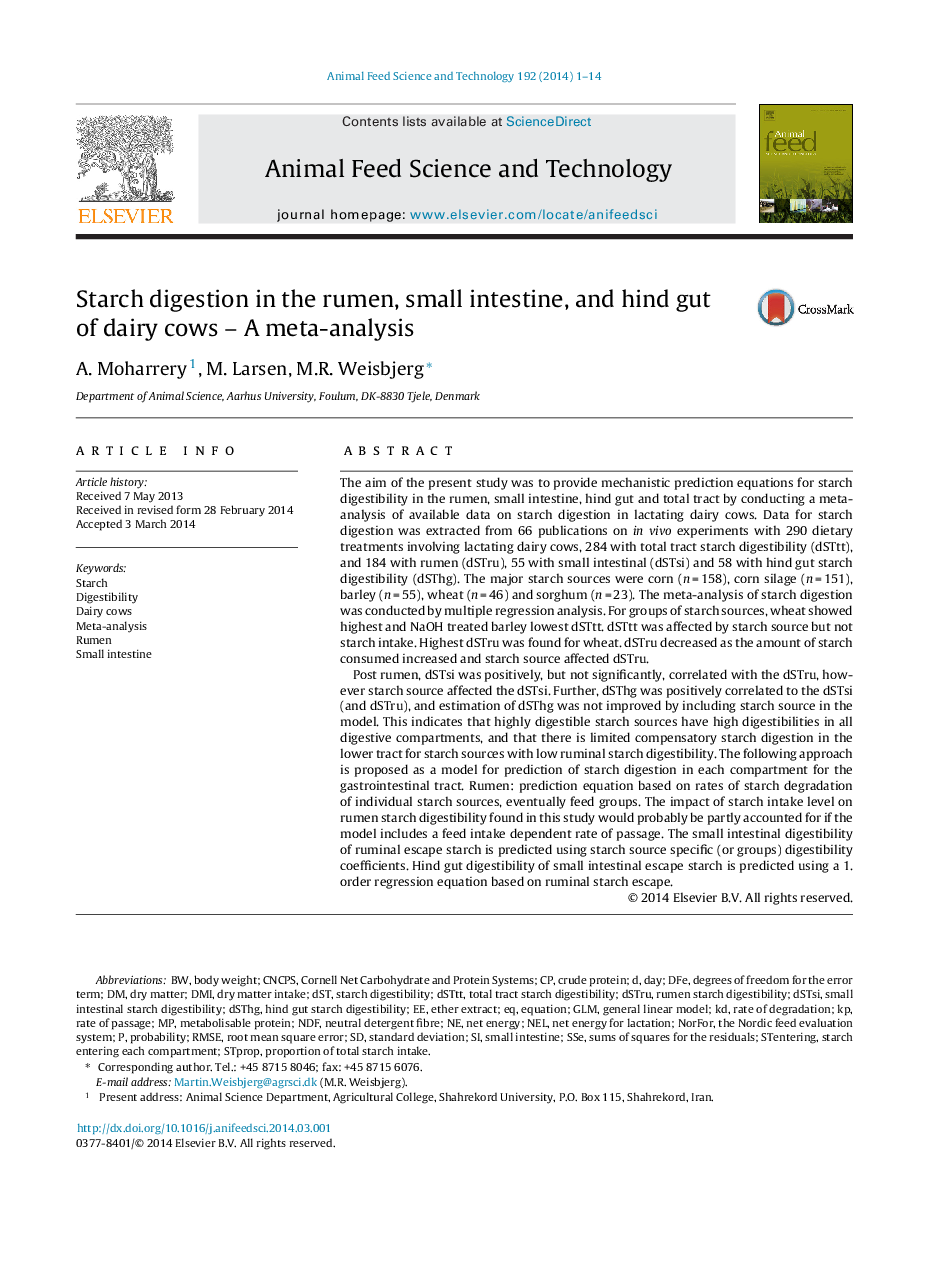| کد مقاله | کد نشریه | سال انتشار | مقاله انگلیسی | نسخه تمام متن |
|---|---|---|---|---|
| 2419612 | 1552393 | 2014 | 14 صفحه PDF | دانلود رایگان |
• Meta-analysis was performed on starch digestion data in the rumen, small intestine and hind gut of dairy cows.
• Rumen starch digestibility was affected by starch source and decreased with increasing starch intake.
• Small intestinal starch digestibility was affected by starch source and positively correlated to rumen starch digestibility.
• Hind gut starch digestibility was positively correlated to rumen starch digestibility but not affected by starch source.
• The meta-analysis provides a starch digestion sub-model that can be used in mechanistic non-linear feed evaluation systems.
The aim of the present study was to provide mechanistic prediction equations for starch digestibility in the rumen, small intestine, hind gut and total tract by conducting a meta-analysis of available data on starch digestion in lactating dairy cows. Data for starch digestion was extracted from 66 publications on in vivo experiments with 290 dietary treatments involving lactating dairy cows, 284 with total tract starch digestibility (dSTtt), and 184 with rumen (dSTru), 55 with small intestinal (dSTsi) and 58 with hind gut starch digestibility (dSThg). The major starch sources were corn (n = 158), corn silage (n = 151), barley (n = 55), wheat (n = 46) and sorghum (n = 23). The meta-analysis of starch digestion was conducted by multiple regression analysis. For groups of starch sources, wheat showed highest and NaOH treated barley lowest dSTtt. dSTtt was affected by starch source but not starch intake. Highest dSTru was found for wheat. dSTru decreased as the amount of starch consumed increased and starch source affected dSTru.Post rumen, dSTsi was positively, but not significantly, correlated with the dSTru, however starch source affected the dSTsi. Further, dSThg was positively correlated to the dSTsi (and dSTru), and estimation of dSThg was not improved by including starch source in the model. This indicates that highly digestible starch sources have high digestibilities in all digestive compartments, and that there is limited compensatory starch digestion in the lower tract for starch sources with low ruminal starch digestibility. The following approach is proposed as a model for prediction of starch digestion in each compartment for the gastrointestinal tract. Rumen: prediction equation based on rates of starch degradation of individual starch sources, eventually feed groups. The impact of starch intake level on rumen starch digestibility found in this study would probably be partly accounted for if the model includes a feed intake dependent rate of passage. The small intestinal digestibility of ruminal escape starch is predicted using starch source specific (or groups) digestibility coefficients. Hind gut digestibility of small intestinal escape starch is predicted using a 1. order regression equation based on ruminal starch escape.
Journal: Animal Feed Science and Technology - Volume 192, June 2014, Pages 1–14
